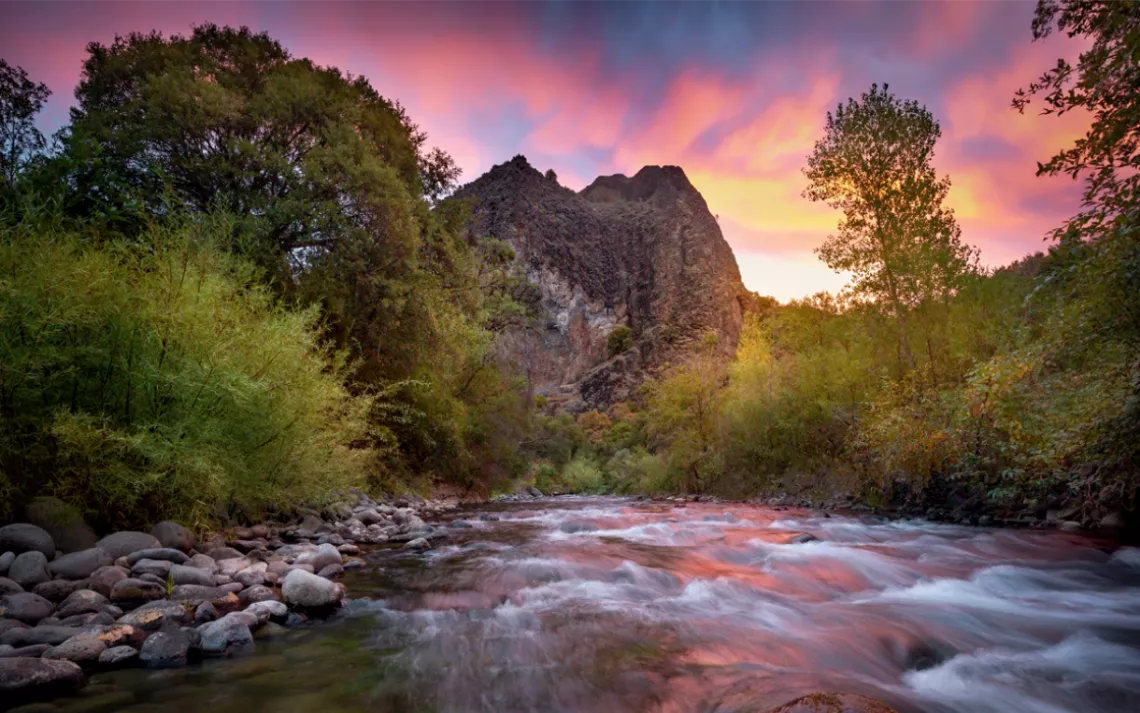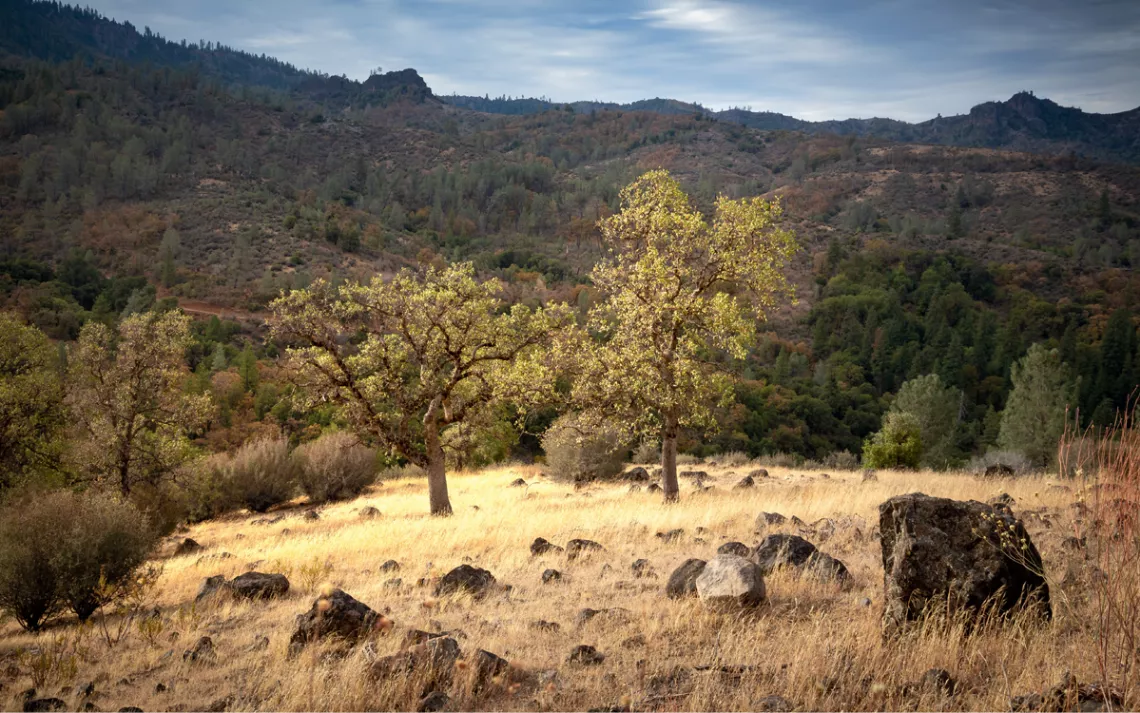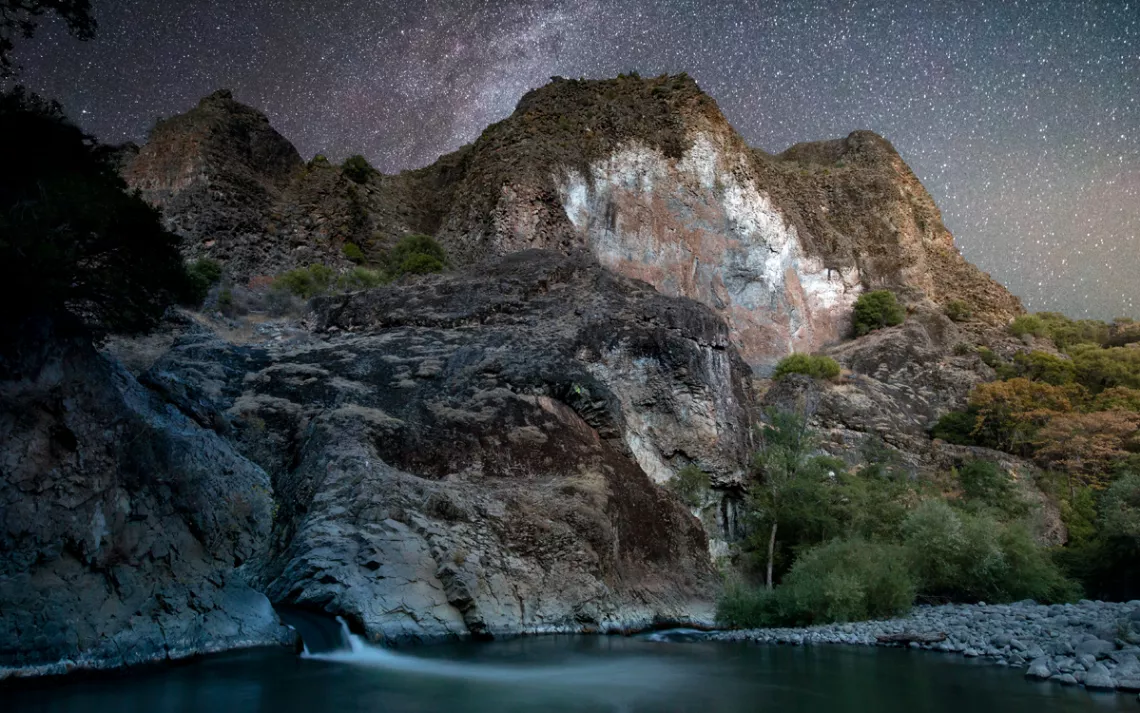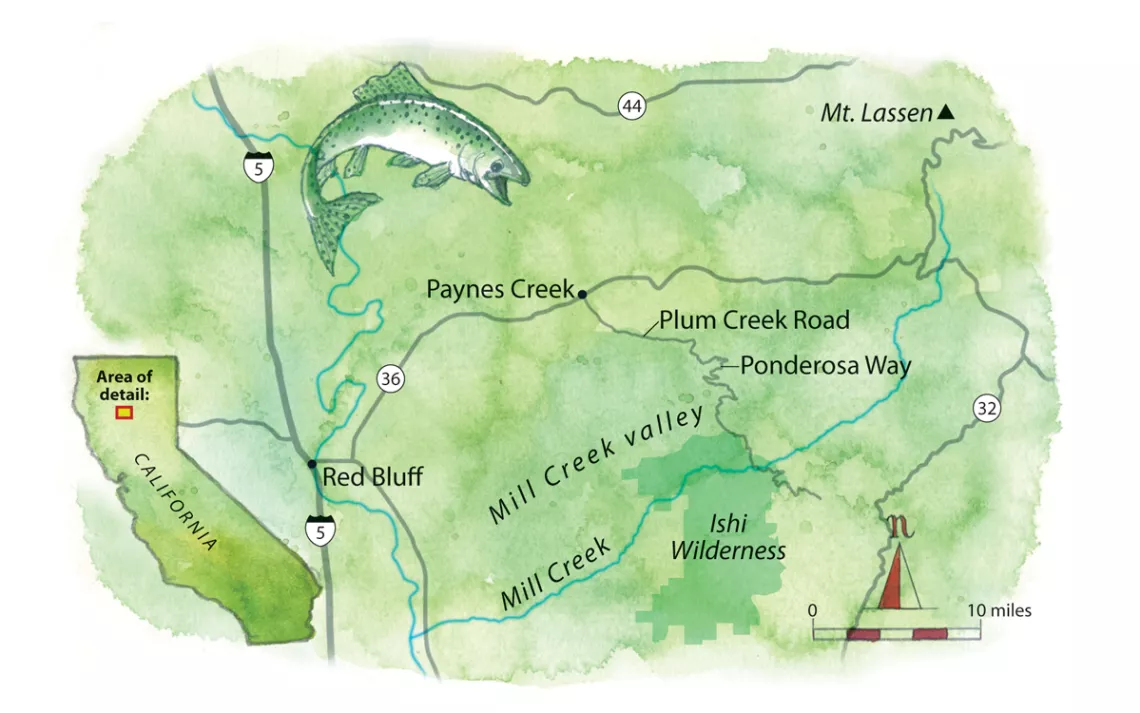Ishi Wilderness Is a Portal Into the Indigenous History of California
A land acknowledgment becomes a gesture of gratitude to those who came first

California's Ishi Wilderness is one of just seven federally designated wilderness areas named after an Indigenous individual. | Photos by Jeff Lewis
We had been camped in the creek-side meadow for three days when the idea finally hit with visceral force: Once, this field of grass had been someone's home.
I know, I know—it wasn't the most original thought. I've backpacked through wildernesses across North America, and in many landscapes I've felt the imprint of history, the knowledge that this river valley or that ridgeline had been walked by human feet long before Europeans came across the sea. But in the Mill Creek valley of Northern California's Ishi Wilderness, I could feel history acutely.

Located in the oak-studded foothills of Mt. Lassen, the Mill Creek gorge is steep and deep—a nearly 2,000-foot drop from cliff to creek—with few flat valley bottoms. Surely this broad meadow would've been the perfect site for a village. I crisscrossed the terrain, wondering where the cedar-clad pit houses might have been, imagining the bustle of human life in this now-empty place.
The Ishi Wilderness is one of just seven federally designated wilderness areas named after an Indigenous individual. If the past feels close there, that's because the history of the Ishi Wilderness has been so well told. The story of Ishi—"the last wild Indian of North America," as 20th-century anthropologists crudely described him—is a beautiful and sometimes bloody tale of resistance and resilience.

In the summer of 1911, a fiftysomething Native American man on the verge of starvation walked into a slaughterhouse yard outside Oroville, California. He was the last member of the
In the foothills of California's Mt. Lassen, Ishi Wilderness is one of seven federal wilderness areas named after Indigenous individuals.Yahi nation, a Yana-speaking people who were still resisting settler land grabs a generation after most Native nations in California had been imprisoned in the Spanish missions or slaughtered by the forty-niners. Decades after Geronimo's surrender and Crazy Horse's assassination, a small remnant of Yahi continued living a sovereign life in "the inner fastness of their own heartland, the smallest free nation in the world," as Ishi biographer Theodora Kroeber relates it.
Ishi was very likely the last uncontacted Indigenous person in North America, and his "surrender" at the slaughterhouse (he expected to be executed) represented the final encounter between intact Paleolithic culture and industrial society on this continent. When Ishi came down from the hills, he journeyed from a universe made of stone, bone, and wood into a world of railroads, telephones, and telegraphs. In Kroeber's telling, Ishi navigated "the ordeal of civilization" with preternatural grace. He took up residence in the University of California's Museum of Anthropology, where he spent his time working with linguists who were studying the Yana language. On the weekends, he showed San Francisco crowds how to make bows and arrows and spark a friction fire.

Map by Steve Stankiewicz
Throughout, he maintained a posture of independence. To guard his self-sufficiency, Ishi took on janitorial duties around the museum so he could earn a wage and not become (as officials at the Bureau of Indian Affairs wanted) a ward of the state. His demonstrations for the public weren't carnival performances; for Ishi, they were a way to offer instruction to the whites, whom he considered "sophisticated children—smart but not wise." He never revealed to anyone his true, family-given name. "Ishi" is simply the Yana word for "man." His insistence on anonymity was Ishi's final act of concealment.
To read this history while camped on the banks of Mill Creek helped to make the landscape legible. By the standards of 1776 (when the first Europeans settled in Northern California), the area is now impoverished. Grizzlies no longer prowl the hillsides, and salmon no longer swim the waterways in runs so large they could be netted. Yet the place would be easily recognizable to Ishi. The slopes are still covered in gray pine and blue oak, the bottomlands stitched with ponderosa and madrone. The Tehama deer—the largest migratory deer herd in California, some 20,000 strong—still find a home there. Chinook and steelhead continue to spawn in Mill Creek, whose rapids make the loudest sound around.
Reading about the Yahi, I slipped into fantasies of a prelapsarian paradise. No doubt it was a hard life, but I imagine it was a good one. In the springtime, the creeks were choked with salmon and the grasslands packed with fresh edible bulbs. On the hot days of summer, families sprawled in the sun after their midafternoon plunge and made plans for the annual migration to the cooler forests around Waganupa (today's Mt. Lassen).
I know such fantasies are fraught. Elisions, omissions, and blind spots risk glossing over the brutality that came later. But if it's romantic to imagine a better world through another culture's memories, then I'll cop to romanticism. The midden of history offers a portal through which to glimpse a lost world. To appreciate a landscape through the lens of the past can be, at its best, an act of acknowledgment. Memory becomes a gesture of gratitude toward those who came first.
Where
Ishi Wilderness, Lassen National Forest, California
Getting There
From Red Bluff, drive east on Highway 36 to the town of Paynes Creek. From there, take Plum Creek Road several miles to Ponderosa Way. Follow signs along 20 miles of Forest Service roads that range from well graded to a knobby mess. A four-wheel-drive vehicle or a car with extra clearance is recommended for the rough terrain.
When to Visit
The southern Cascade Range foothills are cold in winter and brutally hot in summer. Springtime offers the best weather as well as an opportunity for top-notch wildflower viewing.
Permits
None are required for dispersed camping in the wilderness. The developed campsites on Mill Creek and Deer Creek are first come, first served. A California fire permit is required for ground fires and stoves.
Suggested Reading
Two books by anthropologist Theodora Kroeber tell Ishi's remarkable story in detail: Ishi in Two Worlds and Ishi, Last of His Tribe.
 The Magazine of The Sierra Club
The Magazine of The Sierra Club



